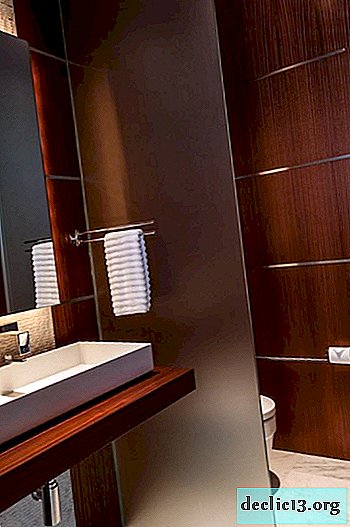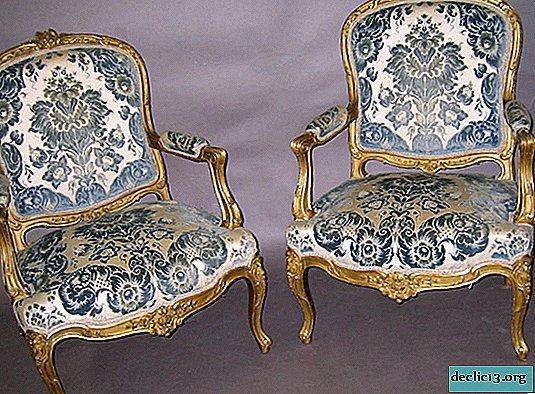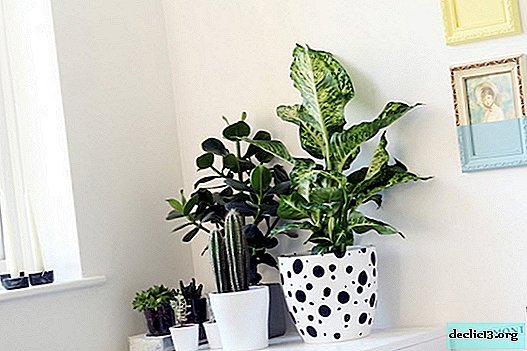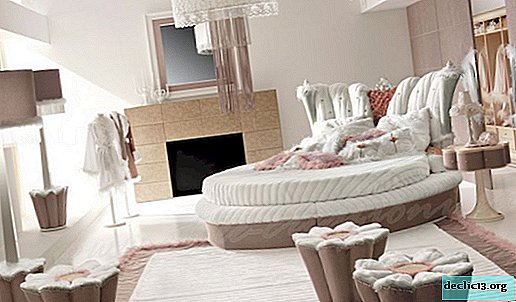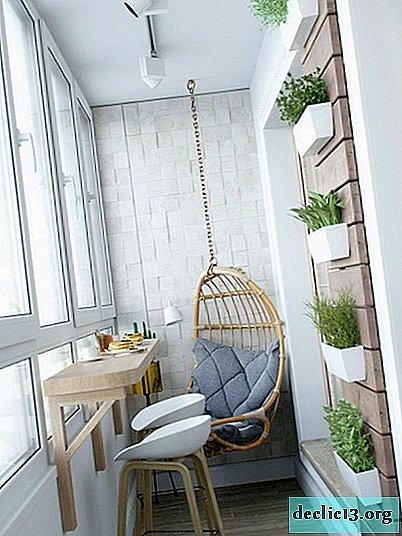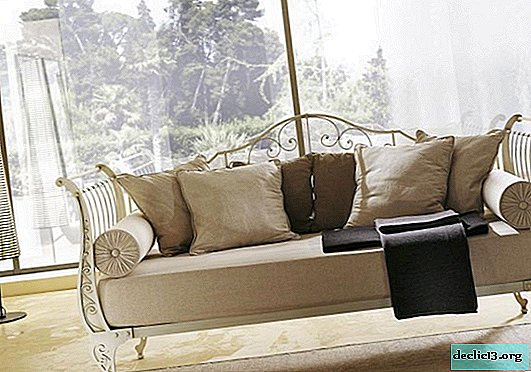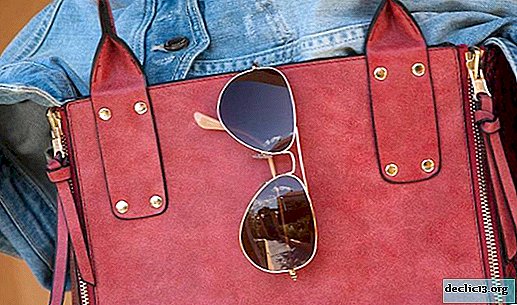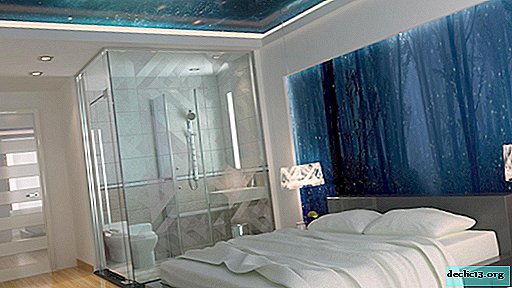Features of the design of the sliding table, DIY
Modern furniture manufacturers are constantly improving their own products, increasing its functionality. If you wish, you can make a sliding table with your own hands, then the product will meet individual parameters and organically fit into the interior. Ergonomic furniture saves space in the apartment, increases if necessary, allowing guests to be accommodated.
Design features
Sliding tables have countertops divided into two parts exactly in the middle. A special compartment is provided below, where an additional element is stored. If necessary, the sidewalls are moved to the sides, and the hidden part is inserted into the middle. The popularity of furniture is due to a significant increase in the dining area. To lay out the table, you need to follow the algorithm:
- Push the halves apart.
- To take out the central hidden part, to place in grooves.
- Slide the sides to secure the insert.
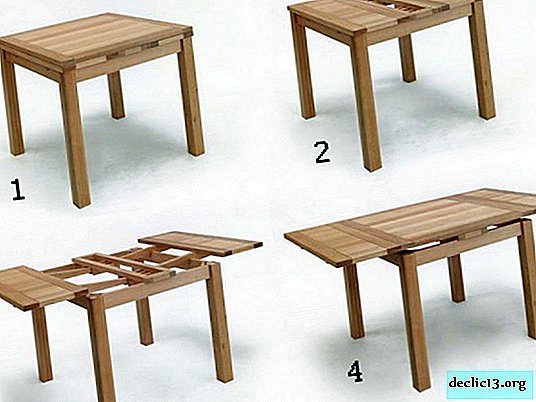 Table expansion algorithm
Table expansion algorithmA folding table can be of various shapes. Round models are equipped with wing edges, which can be removed if necessary. The design with a diameter of 1.1 m can accommodate up to 6 people, can increase, adding another 2-3 seats. Advantages of the round model:
- Versatility, the table is suitable for small and large rooms.
- Safety and usability.
- Harmonious combination with the Art Nouveau interior.
Disadvantages: low stability, in large products the central part is often empty.
A rectangular kitchen table is a classic option, it can be moved apart with the help of an additional element or by moving the legs, it increases by about 0.5 m. Capacity - up to 12 people. Benefits:
- Strength.
- Relevance of the table for spacious and small rooms.
- Save space.
- It harmonizes with various interior styles.
A disadvantage is the risk of injury due to sharp corners. It is not recommended to use a large massive dining table of this shape in a small room. It will occupy all the free space, which is inconvenient and impractical.
 Round
Round Rectangular
RectangularBenefits of DIY
A few decades ago, sliding tables were made exclusively of wood, so the work was on the shoulder only for experienced joiners. Today, high-quality mechanisms are on sale, which greatly facilitates the process. Even beginners will cope with manufacturing, it is enough to have basic skills in using a jigsaw, drill, screwdriver.
The advantages of self-made production of sliding tables with their own hands include:
- Control of each stage. You can always check the strength of the structure, the reliability of the bolted elements.
- Materials and fittings are selected based on individual preferences.
- At the time of designing the kitchen table, you can think about creating the whole atmosphere in a single style.
- Easy assembly. Work does not require special knowledge and experience.
- Saving money. Costs will be several times cheaper compared to purchased models.
The main advantage of self-assembly of the table is the ability to implement their own ideas. Flight of fancy is not limited to anything.
 Control of each stage
Control of each stage Materials and fittings are selected based on individual preferences.
Materials and fittings are selected based on individual preferences. Easy assembly
Easy assembly Saving money
Saving moneyMaterials, tools, consumables
To update the interior of the kitchen with your own hands, it is enough to make a beautiful reliable table. When choosing suitable materials, their features, pluses and minuses are taken into account:
- Chipboard. It is made from technological chips, shavings and artificial resins. Advantages: low cost, sold in almost any size, has a uniform structure, and can be easily processed. Disadvantages: low strength, not too aesthetic appearance, does not tolerate moisture.
- Chipboard. It is created from wood chips by hot pressing. Advantages: reasonable price, simple processing and assembly, durability, long service life. Disadvantages: harmful formaldehyde resins in the composition, deforms when moisture gets inside.
- MDF. Fiberboard with varying degrees of density. Pros: the manufacture of canvases with any size, strength, can be milled, pressed, painted, environmental safety. Minus: low moisture resistance.
- Plywood. Consists of several layers, is popular among consumers. A table for the kitchen is made of a special furniture variety of material. Advantages: reliability, ease of processing, reasonable price, the possibility of restoration of damaged products. Disadvantage: does not withstand high loads.
- Wood. The most popular material of natural origin with a unique texture. Advantages: hypoallergenic, ease of use, lightness, strength. Disadvantages: special care, susceptibility to mechanical damage.
- Plastic. One of the most common materials, lightweight, ductile. Pros: safety, ease of maintenance and processing, a variety of colors, resistance to temperature extremes and moisture. Cons: can not withstand heavy loads, can be toxic.
- Glass. A brittle surface breaks even from minor impacts. Advantages: stylish appearance, visual increase in space. Disadvantages: high degree of brittleness, injury hazard, difficult processing.
The table in the kitchen is necessarily complemented by reliable legs. The most durable are metal products from aluminum, chromium, stainless steel, forged elements. Other options are also used: solid wood, whetstones, plastic, stone.
 Chipboard
Chipboard Chipboard
Chipboard MDF
MDF Plywood
Plywood Wood
Wood Plastic
Plastic Glass
GlassBefore you consider how best to make a sliding table, you need to prepare the tools:
- jigsaw;
- grinding machine;
- drill;
- screwdriver;
- roulette wheel;
- building level.
For fastening, 4 x 16 mm and 4 x 50 mm screws, dowels 8 x 40 mm, furniture corners, building glue are used. The mechanism for a sliding table is better to get ready. You will need guides, which are a system of skids made of plastic or metal. They serve to extend the additional element. When choosing, it is worth paying attention to the type of structure (ball or roller), the thickness of the metal. There should be no defects or bumps on the surface.





Drawing preparation
In free access, you can find ready-made drawings for the independent manufacture of a sliding table. When choosing them, you should pay attention to:
- design features;
- suitable materials;
- submitted recommendations.
Otherwise, the quality of the table will suffer. When adapting to your own sizes, it is worth considering the growth and complexion of households, the number of seats. If necessary, these parameters increase or decrease.
The standard width of the additional element is 50 cm. When unfolded, the length of the table reaches 230-280 cm. When assembled, the dimensions are reduced to 120-180 cm. The height of the product is usually 70 cm.
To perform the drill, you must specify the parameters of each element. For example, to make a folding table from chipboard you will need:
- Worktop details (2 pcs.) - 45 x 70 cm.
- Removable element - 40 x 70 cm.
- The sides of the boxes (4 pcs.) - 42 x 12 cm.
- End parts (2 pcs.) - 60 x 12 cm.
If desired, the scheme is performed independently. To do this, on a paper, you need to draw a circle using a compass or by circling any round object. Thus, the table settings will meet the requirements of users.


DIY step-by-step manufacturing algorithm
You can make a round sliding table with your own hands from any material: plywood, wood or chipboard. All actions are carried out in accordance with step by step instructions:
- The base of the round product and all the necessary elements indicated in the drawing are cut from the selected material.
- The expanding circle is cut in half, the surface of the elements is carefully ground.
- Details are fixed with glue, after drying - with screws.
- The legs of the table are the easiest to make from the bars, you can purchase finished metal ones.
- In the central part, a mechanism is attached so that the semicircular details can be moved apart and the area of the countertop increased.
- The table is flipped over, the legs are screwed on, fixed with hinges.
- The product is varnished. When using paint, the structure is pre-treated with putty, special attention is paid to joints.
For the table to serve for a long time, it is necessary to keep it clean. With frequent use, the folding model is covered with oilcloth or a tablecloth.
For beginners, it will be easiest to make a table of wooden parts. The material is easy to process, does not cause problems with cutting and leveling.
 The base of the round product and all the necessary elements indicated in the drawing are cut from the selected material
The base of the round product and all the necessary elements indicated in the drawing are cut from the selected material The expanding circle is cut in half, the surface of the elements is carefully ground.
The expanding circle is cut in half, the surface of the elements is carefully ground. In the central part, a mechanism is attached so that the semicircular parts can be moved apart and the area of the countertop increased
In the central part, a mechanism is attached so that the semicircular parts can be moved apart and the area of the countertop increased The table is flipped over, the legs are screwed in, fixed with hinges
The table is flipped over, the legs are screwed in, fixed with hinges The product is varnished. When using paint, the structure is pre-treated with putty, special attention is paid to joints
The product is varnished. When using paint, the structure is pre-treated with putty, special attention is paid to jointsHow to assemble a factory product
The complete set of factory furniture includes a countertop, a drawer, a pair of guides with a lock, legs, a central insert. The products are complemented by a special mechanism, fasteners: screws, washers, barrels, as well as a hex wrench and cushioning bearings. It is necessary to assemble the structure according to the algorithm:
- The packaging is removed from all the elements, the countertop is placed face-down on cardboard.
- Fasteners are sorted for ease of use.
- The legs are mounted, fixed with screws and washers.
- Furniture overturns.
- The mechanism is checked, the countertop halves are held, the lock is removed.
- An additional insert is placed in special grooves, it is necessary to ensure that the part stands up evenly.
- Parts of the table are shifted. They should fit snugly together, forming a smooth surface.
Furniture sets always include schemes to facilitate the assembly process. They describe in detail each element, attachment points, the sequence of actions.
The table, which can be laid out, is a universal option for spacious and small rooms. An excellent solution will be the manufacture of furniture on your own, you just need to choose the right drawing, materials and tools. Experienced joiners and beginners will cope with the work.


